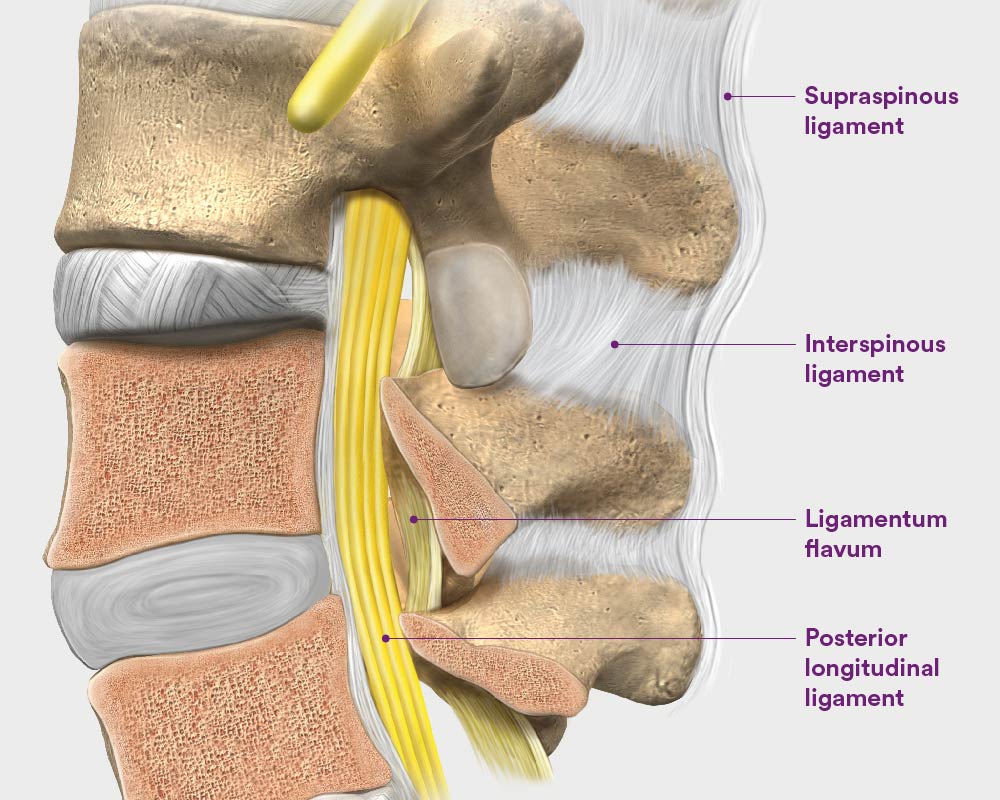Introduction to spine
The human spine is made up of 24 bones, called vertebrae, plus the sacrum and coccyx (tailbone). The spine supports the load of the upper body, serves as an attachment point for muscles and ligaments that provide constrained motion, and protects the spinal cord and cauda equina.
Spinal anatomy
1. The top seven vertebrae make up the cervical spine (neck).
2. The next 12 vertebrae are attached to the ribs and make up the thoracic spine (chest).
3. The next five vertebrae support most of the weight of the torso and make up the lumbar spine (lower back).
4. The next five vertebrae are fused into one bone called the sacrum and the last four vertebrae are fused into one bone called the coccyx (tailbone).
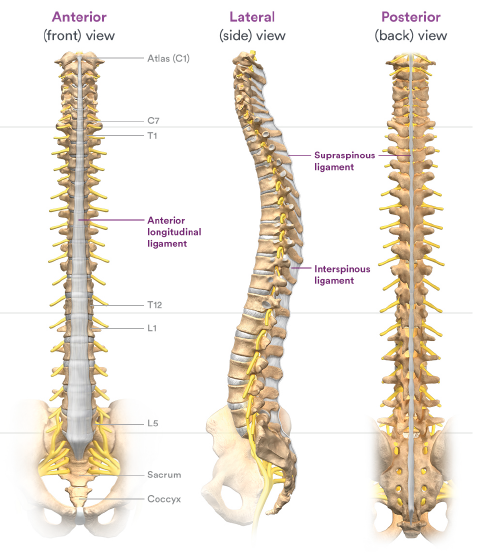
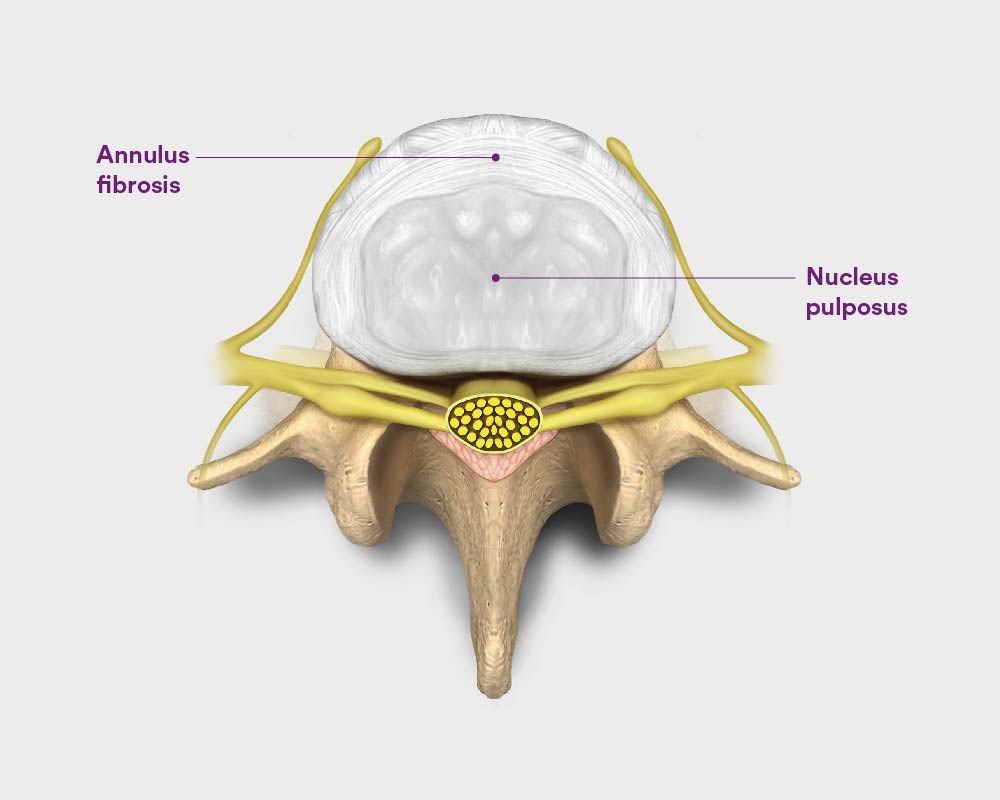
Intervertebral discs
Vertebrae are connected by several joints, which allow you to bend, twist and carry loads. The main joint between two vertebrae is called an intervertebral disc.
The disc is made of two parts, a tough and fibrous outer layer called the annulus fibrosis, and a soft, gelatinous center called the nucleus pulposus. These two parts work in conjunction to allow the spine to move, and also provide shock absorption.

Nerves
Each vertebra has an opening called the vertebral foramen through which a tubular nervous structure travels. Beginning at the base of the brain to the upper lumbar spine, this structure is called the spinal cord.
Below the spinal cord, in the lumbar spine, the nerves that exit the spinal cord continue to travel through the vertebral foramen as a bundle known as the cauda equina.
At each level of the spine, spinal nerves exit the bony spine then extend throughout the body. After exiting the spinal canal, these spinal nerves then further entwine and extend to send signals between your brain and your organs, muscles and other tissues.
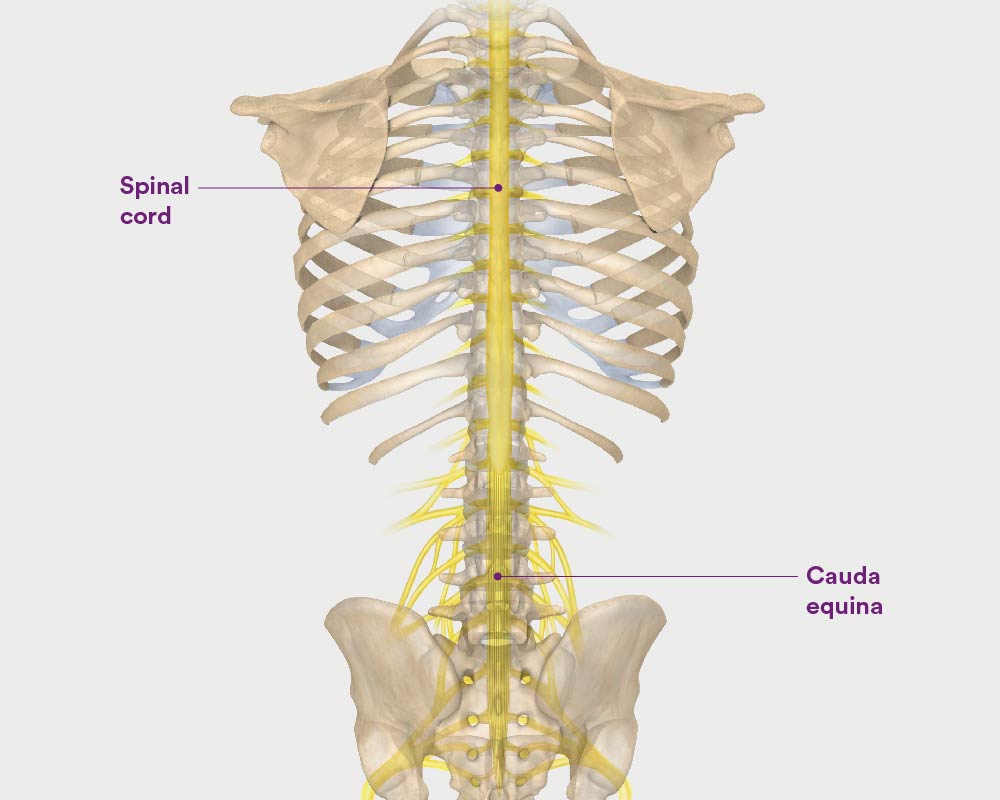
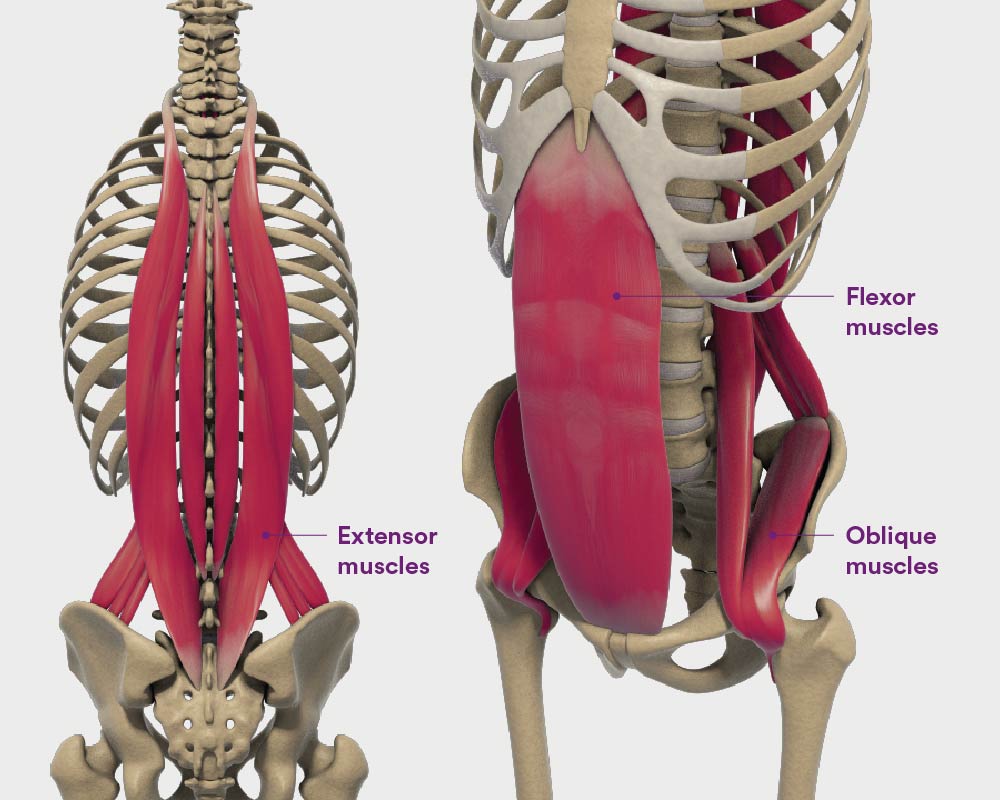
Muscles
The spine is surrounded by muscles which assist in movement. These include:
- extensor muscles that are connected to the back of the spine and assist in standing and lifting;
- flexor muscles that are connected to the front of the spine and enable flexing, bending over, lifting and arching the lower (lumbar) spine; and
- oblique muscles that are connected to the sides of the spine and help rotate and maintain posture.

Ligaments
Ligaments are tough bands of elastic tissue that connect bones together and help to restrain excessive motion at the joints. The five spinal ligaments, which help to stabilize the spinal column during motion, include:
- supraspinous ligament,
- interspinous ligament,
- ligamentum flavum,
- anterior longitudinal ligament, and
- posterior longitudinal ligament.
